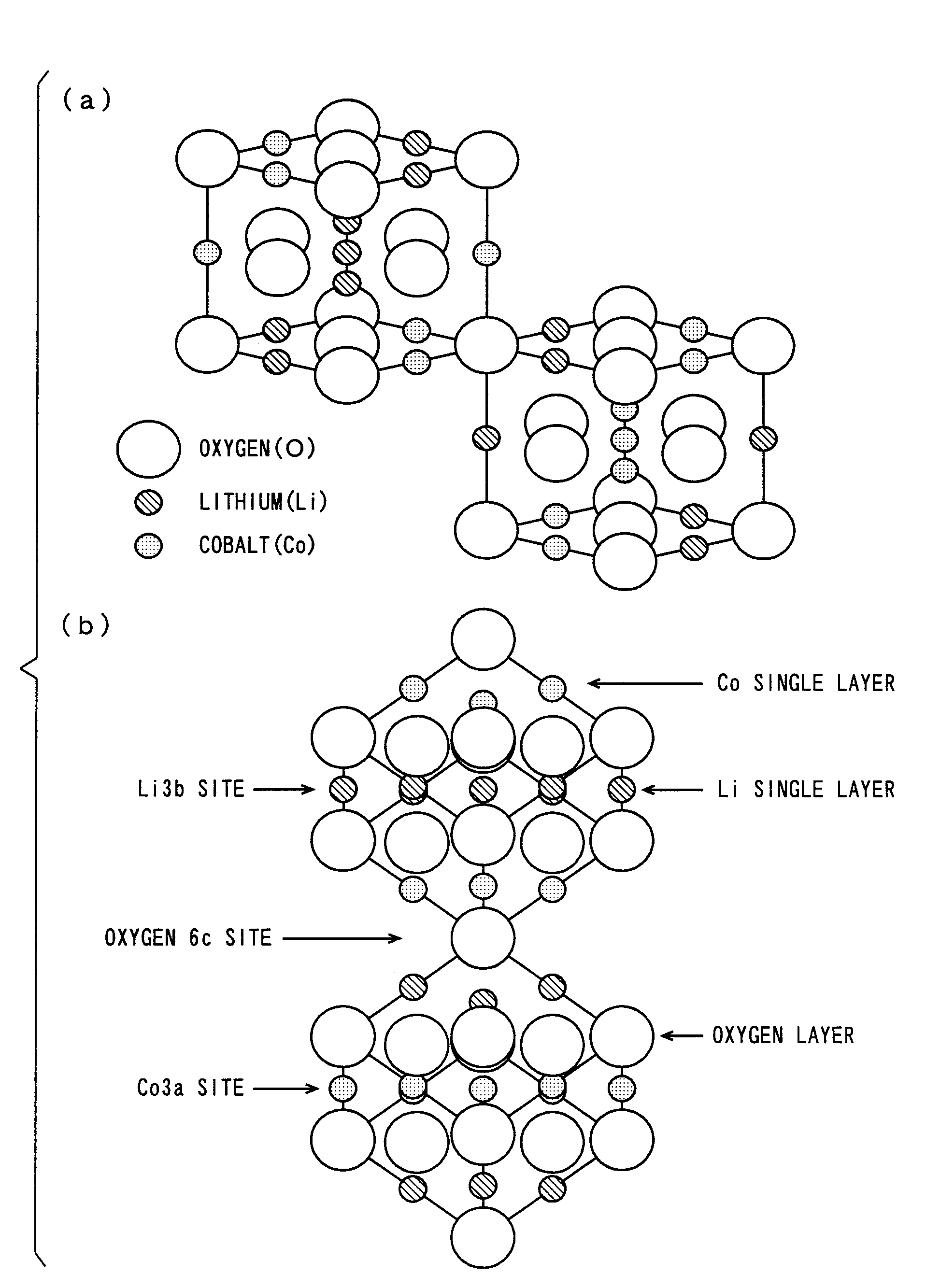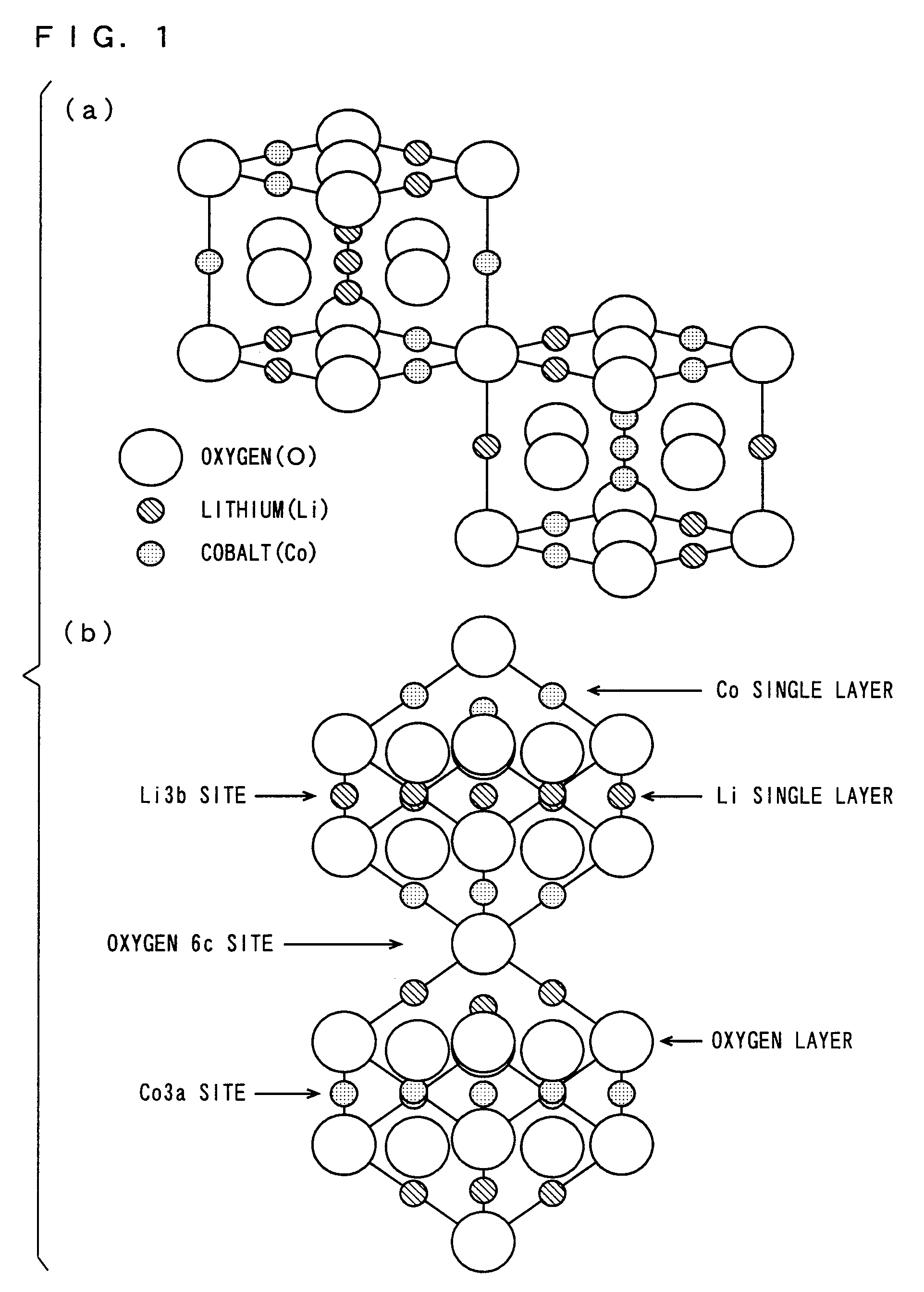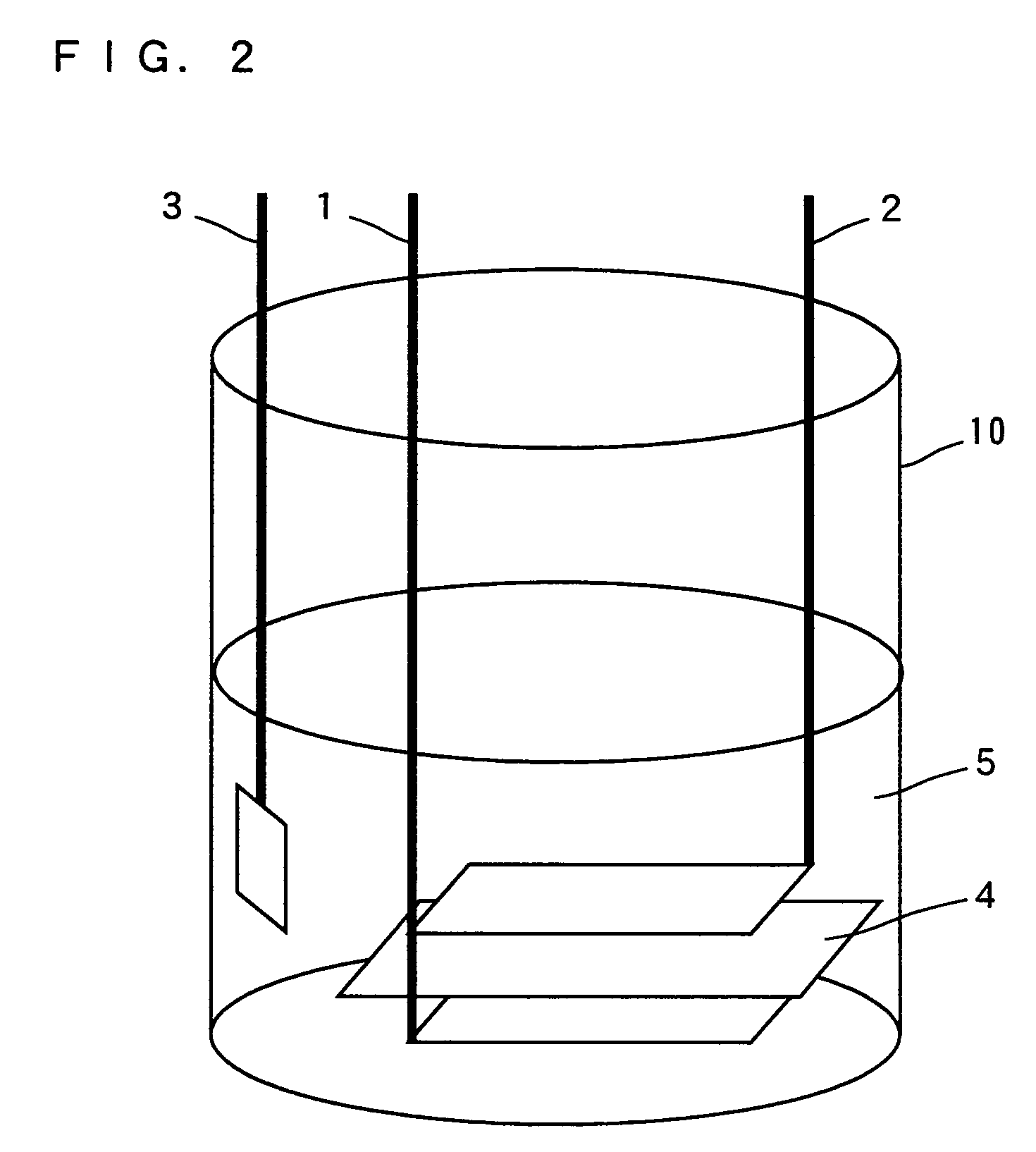Non-aqueous electrolyte secondary battery, positive electrode active material and method of manufacturing the same
a technology of positive electrode active material and secondary battery, which is applied in the direction of nickel compounds, manganates/permanentates, cell components, etc., can solve the problems of underdevelopment of higher-capacity technology, limited use of 55% of theoretical capacity, and the effect of improving capacity
- Summary
- Abstract
- Description
- Claims
- Application Information
AI Technical Summary
Benefits of technology
Problems solved by technology
Method used
Image
Examples
example 1
[0061]In Example 1, the test cell shown in FIG. 2 was prepared to measure the discharge capacity of lithium cobaltate in which magnesium atoms are substituted for part of lithium atoms.
[0062]As shown in FIG. 2, a positive electrode 1, a negative electrode 2, and a reference electrode 3 are disposed in a cell vessel 10. A separator 4 is inserted between the positive electrode 1 and negative electrode 2. A non-aqueous electrolyte 5 is poured into the cell vessel 10.
[0063]In Example 1, lithium cobaltate (LiCoO2), a conducting agent made of carbon, and a binder made of polyvinilidene di fluoride (PVdF) were mixed at a weight ratio of 90:5:5, respectively, and N-methyl-2-pyrrolidone was added to the mixture to prepare a slurry. This slurry was applied to a current collector made of aluminum foil, forming the positive electrode 1. Metallic lithium was used for the negative electrode 2 and reference electrode 3.
[0064]A non-aqueous electrolyte (non-aqueous electrolyte including a lithium sa...
example 2
[0075]In Example 2, a structural change in lithium cobaltate before and after substitution of magnesium atoms (Mg) for part of lithium atoms (Li) was confirmed by XRD (X-ray diffraction) measurement.
[0076]In the XRD measurement, measurements were made on a range of 2 θ from 10 to 80 degrees with a scanning rate set to 1 degree / min., using CU (40 kV, 40 mA) as a source.
[0077]FIG. 4 shows the measurement results of XRD patterns of the positive electrode before and after substitution of magnesium atoms for lithium atoms.
[0078]In FIG. 4, thin solid line below represents an XRD pattern before substitution of magnesium atoms for lithium atoms, and thick solid line above represents an XRD pattern after substitution of magnesium atoms for lithium atoms.
[0079]Black rhombuses represent reflection peaks from lithium cobaltate (LiCoO2), and white circles represent reflection peaks from Al2O3. The reflection peaks from Al2O3 were derived from an aluminum oxide on the surface of the current colle...
PUM
| Property | Measurement | Unit |
|---|---|---|
| current density | aaaaa | aaaaa |
| charge capacity | aaaaa | aaaaa |
| charge capacity | aaaaa | aaaaa |
Abstract
Description
Claims
Application Information
 Login to View More
Login to View More - R&D
- Intellectual Property
- Life Sciences
- Materials
- Tech Scout
- Unparalleled Data Quality
- Higher Quality Content
- 60% Fewer Hallucinations
Browse by: Latest US Patents, China's latest patents, Technical Efficacy Thesaurus, Application Domain, Technology Topic, Popular Technical Reports.
© 2025 PatSnap. All rights reserved.Legal|Privacy policy|Modern Slavery Act Transparency Statement|Sitemap|About US| Contact US: help@patsnap.com



